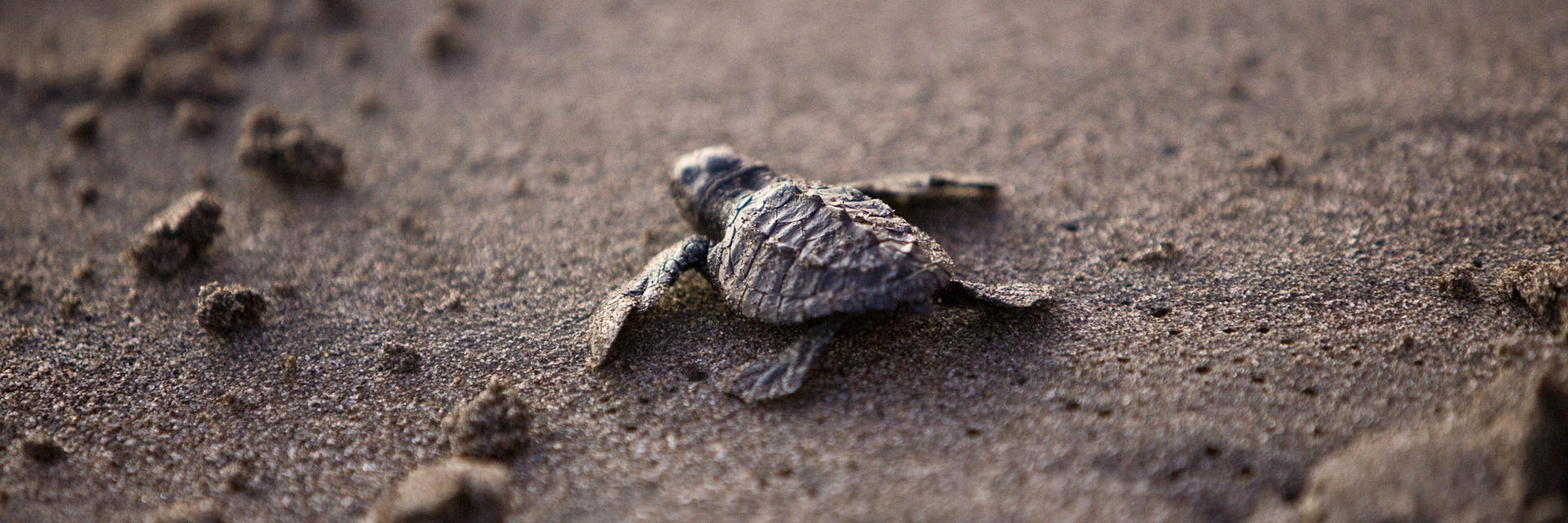The Valuable Lives of Sea Turtles
(by Dariya Gavrish, Environmental Engineer in WKC’s Dubai Office)
Turtles are a truly universally beloved creatures. There’s something calming about watching a turtle going about its daily life, seemingly living a life of complete relaxation. Unsurprisingly, there’s more to the lives of these graceful creatures than meets the eye, and considerable work is carried out by private companies, NGO’s and governments to ensure their survival and well-being.
This article sheds some light on the lives of turtles, the importance of conservation activities in the UAE and Gulf Region as well as WKC’s role in safeguarding this fascinating species.
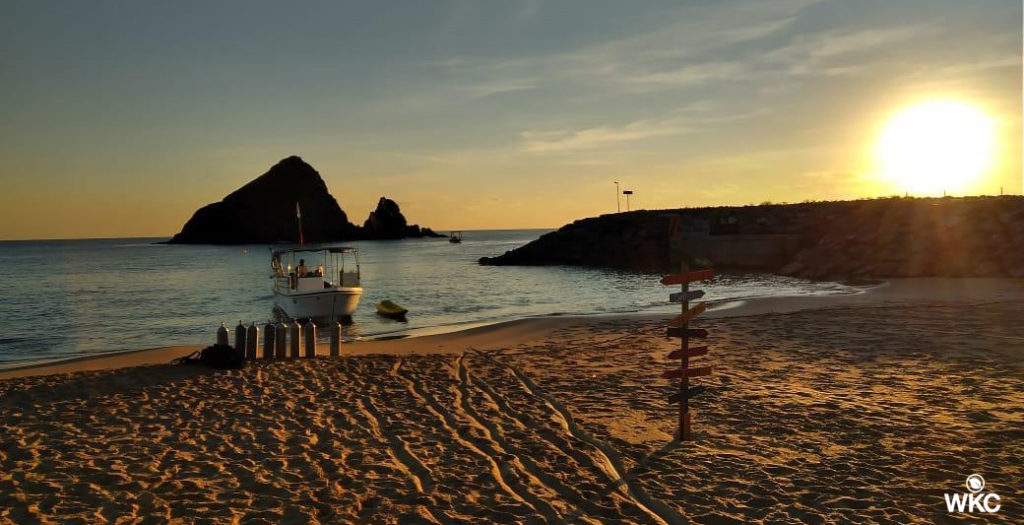
A Deeper Look into the Lives of Turtles
Turtles have existed in our oceans since prehistoric times [1]. Their biology and behavior have been well studied by scientists, yet much about them remains unknown to this day.
Turtles can reach up to 100 years [2] of age, and their reproduction age ranges between 20 to 40 years of age [3]. Female turtles return to their location (beach) of birth to lay their eggs by orienting themselves to the earth’s magnetic poles.
The turtle’s journey between nesting and feeding grounds is long and arduous. One particular study documented a green sea turtles’ journey, starting from Fujairah and travelling to the Andaman Sea, covering an impressive distance of over 8,000km! [4]
One particular study documented a green sea turtles’ journey, starting from Fujairah and travelling to the Andaman Sea, covering an impressive distance of over 8,000km!
Once a female turtle reaches its nesting beach, she will dig a hole, lay more than a hundred eggs, cover them with sand to disguise the nest and go back into the ocean. This is done as a form of protection for the hatchlings as they are left on their own, with no parental care.
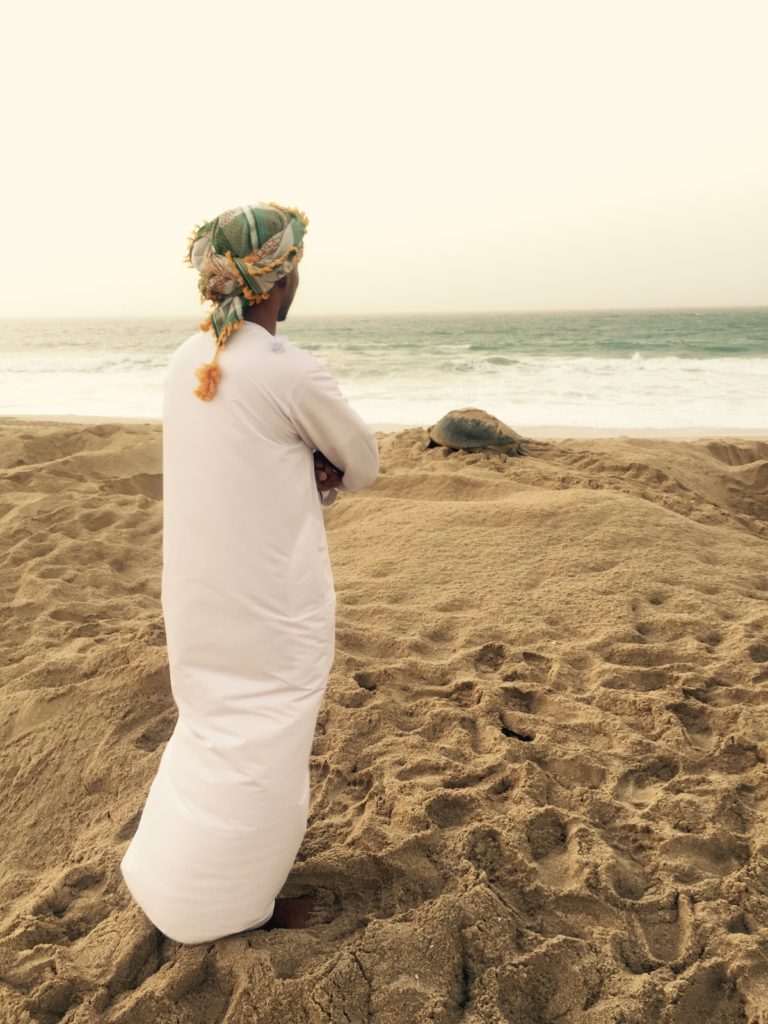
Interestingly, the gender of new-born turtles is determined by the temperature of the sand where the incubation period took place. Generally, it is more likely for male turtles to develop from sand of lower temperatures and females from warmer temperatures.
Generally, it is more likely for male turtles to develop from sand of lower temperatures and females from warmer temperatures.
Sadly, despite many laid eggs, only a few hatchlings survive and reach the ocean safely. The hatchlings crawl as fast as possible towards the sea, during which time they are highly vulnerable to predation, particularly from birds, crabs, cats and foxes.
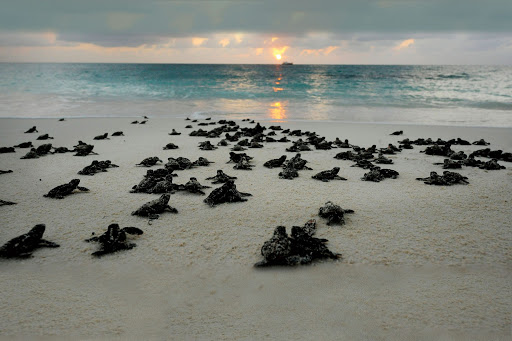
© http://explore.research.ufl.edu
Despite the obvious jeopardy facing the hatchlings on their trek towards the sea, they serve an important role in coastal dune ecosystems. Eggs and hatchlings are a vital source of nutrients for the predators and plants that help stabilize the dune structure, which is especially crucial in the Gulf region. On their journey to the feeding and nesting grounds, turtles also transport much needed nutrients from productive far-away feeding grounds to nutrient-poor coastal ecosystems.
WKC’s Role in Species Protection
Nesting surveys in the UAE, undertaken by specialist environmental consultancy firms such as WKC help to provide valuable information about this fascinating species.
Nesting surveys in the UAE, undertaken by specialist environmental consultancy firms such as WKC help to provide valuable information about this fascinating species. Survey data provides important insights into the seasonal activities of turtles and can serve as guidance for targeted clean-up at vital beaches, designing adequate oil spill response programmes and the implementation of anti-predation measures. UAE waters usually consist of turtle species form Qatar, Oman and Iran with a smaller number of turtles migrating back to Bahrain, Saudi Arabia and Kuwait [5].
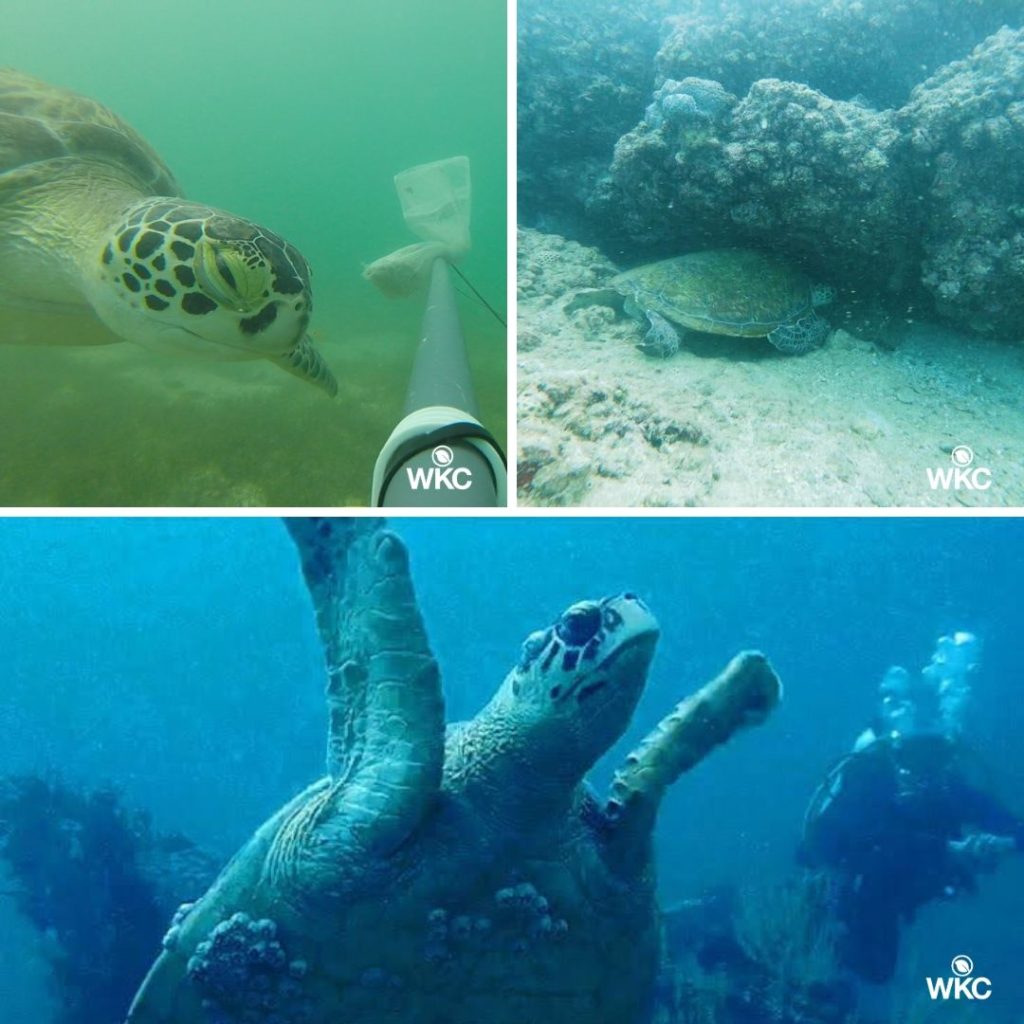
Where there is high demand for developing along coastal territories such as the Gulf, survey data is crucial to support the environmental impact assessment process for construction and land acquisition.

Exploitation together with by-catch, pollution and habitat disruption has contributed to the decrease in turtle populations. It takes many years before a female is mature enough to begin reproducing, and so populations are vulnerable to even small losses. Many thousands of hatchlings are required to sustain an adult population. This is one of the main reasons why the occurrence of nesting turtles is of great significance and places immense value in the undertaking of surveys which will provide much needed information on the lives of turtles.
Our accredited Marine Mammal and Reptile Observers have worked on some of the regions’ most important coastal and offshore developments…
WKC’s Dubai-based marine team offers a broad range of marine ecology and marine science expertise. This is underpinned by our unique integration of remote mapping and predictive software technologies with on-site surveys and local expertise. Our accredited Marine Mammal and Reptile Observers have worked on some of the regions’ most important coastal and offshore developments where our expertise has been used to better understand, assess and protect our treasured marine life, including the much loved turtle for which we are truly blessed to have swimming in our waters.
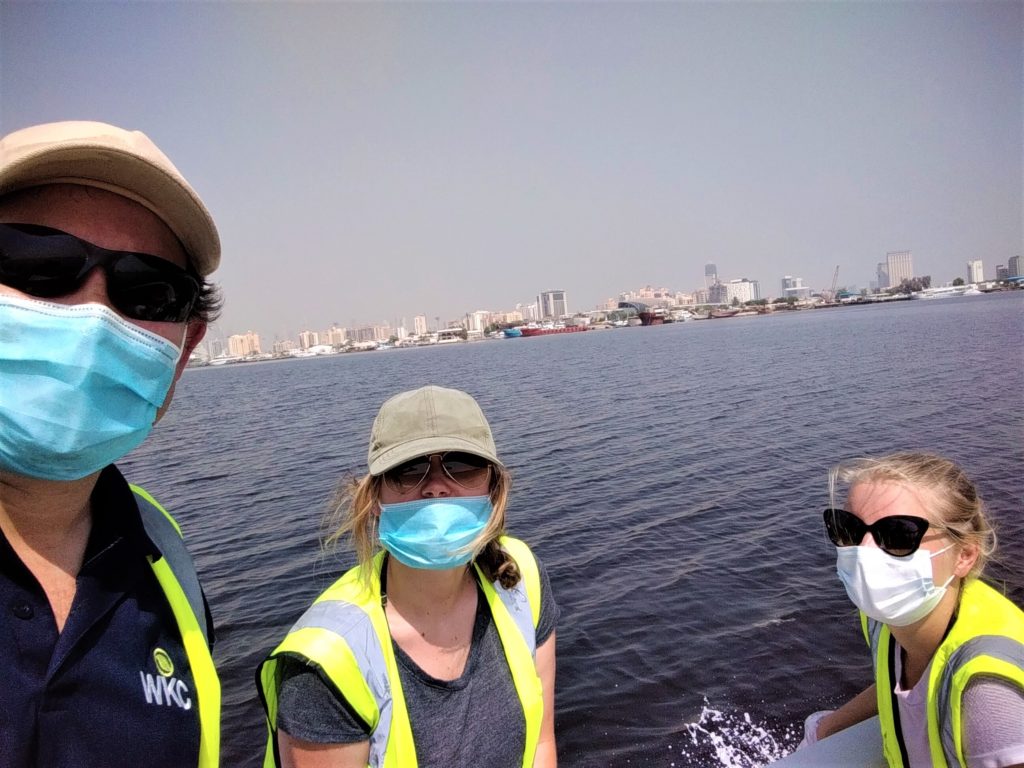
References
[1] Spotila, James R, “Sea turtles : a complete guide to their biology, behavior, and conservation”, Baltimore : Johns Hopkins University Press, 2004.
[2] Schmitz, J. Oswald. “Ecology and Ecosystem Conservation”, Yale University School of Forestry and Environmental Studies, 2007.
[3] Norse, E., Crowder L. “Marine conservation biology: the science of maintaining sea biodiversity”, Marine Conservation Biology Institute, Islandpress, Washington, 2005.
[4] Robinson, D. et al. “Satellite tagging of rehabilitated green sea turtles Chelonia mydas from the United Arab Emirates, including the longest tracked journey for the species”, PLos One 12(9), 2017.
[5] Pilcher, N. J. et al. ‘Identification of Important Sea Turtle Areas (ITAs) for hawksbill turtles in the Arabian Region’, Journal of Experimental Marine Biology and Ecology, 2014

